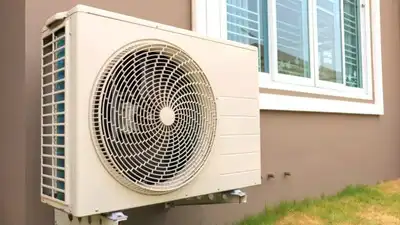ARTICLE AD BOX

With summer temperatures soaring, air conditioners work non-stop to keep indoor spaces cool. While providing relief from the heat, they also produce a by-product many overlook—AC water.
Some environmentally conscious gardeners have begun collecting this water to use on their plants. But is it truly safe or beneficial? While AC water might seem like a free, sustainable option, it comes with both advantages and potential risks. Understanding how it's formed and what it contains is essential before adding it to your watering routine. Here's a closer look at how AC water is generated and whether your plants will actually benefit.
How AC units produce water
Air conditioners cool air by passing it over internal components known as evaporator coils. When warm indoor air flows across these coils, the moisture in the air condenses—similar to how a cold glass sweats on a humid day. This moisture forms droplets on the coils, which then drip into a drain pan. From there, the water—known as condensate—is expelled through a pipe, usually outdoors.This condensate water is essentially the result of humidity being pulled from the air.
It is often compared to distilled water, although its purity depends greatly on the cleanliness of the AC unit and the drainage system.
The pros of using AC water on plants
1. Water-saving solution Using AC water is an efficient way to recycle and reduce water waste, particularly helpful during hot, dry months or in areas facing water restrictions. It’s a smart eco-friendly practice that can contribute to sustainable gardening.2. Gentle on sensitive plantsBecause AC water is free from chemicals like chlorine and fluoride often found in tap water, it’s gentler on delicate houseplants.
Plants prone to leaf burn or root sensitivity—such as spider plants, calatheas, and ferns—respond better to this softer, cleaner water.3. Eco-conscious gardening By reusing water that would otherwise go down the drain, you reduce your household’s environmental footprint. It also offers a cost-free watering alternative for non-edible or ornamental plants.
The cons of using AC water on plants
1. No nutrients AC water is extremely low in nutrients.
While it won’t directly harm plants, it does not feed them either. If used exclusively, your plants may develop deficiencies over time unless supplemented with fertilisers.2. Risk of contamination The quality of AC water depends on the cleanliness of the system. Dirty filters or mouldy coils can lead to water that contains bacteria, fungi, or rust. If not cleaned or stored properly, this water could introduce harmful elements to your soil.3. Unsuitable for all plants AC water should be avoided for edible crops like vegetables and herbs. It is better suited for houseplants and decorative plants, especially when combined with a good fertilisation plan.
How to safely use AC water on plants
- Use only clean water collected from a regularly maintained AC unit.
- Store in a clean, covered container and use it within a few days to avoid bacterial growth.
- Limit use to ornamental or non-edible plants.
- Supplement with fertilisers occasionally to make up for the lack of nutrients.
- Avoid using it exclusively, especially for nutrient-demanding plants.
AC water can be a great addition to your plant care routine—but only if used responsibly. It’s a smart, water-saving solution for non-edible plants and flowers, but don’t count on it alone to keep your plants thriving. Always ensure your air conditioning unit is clean, monitor how your plants respond, and balance its use with nutrient-rich water or fertiliser. When done right, this often-overlooked by-product could become a secret weapon in your eco-friendly gardening toolkit.



.png)
.png)
.png)
















 6 hours ago
5
6 hours ago
5









 English (US) ·
English (US) ·